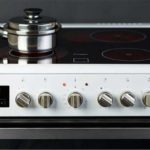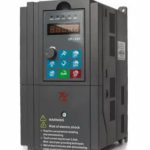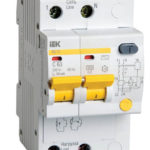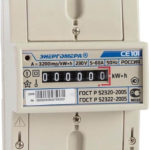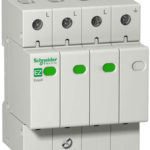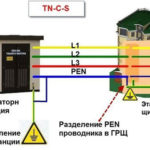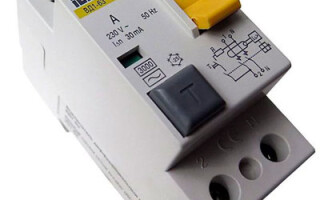Residual current devices (RCDs) are electrical current protection devices that respond to leakage currents (differential currents). Leakage is understood as emergency currents flowing between the network conductors and the "ground". Depending on the magnitude of the residual current, an RCD circuit can prevent electric shock to a person or prevent a fire from occurring due to wiring faults.
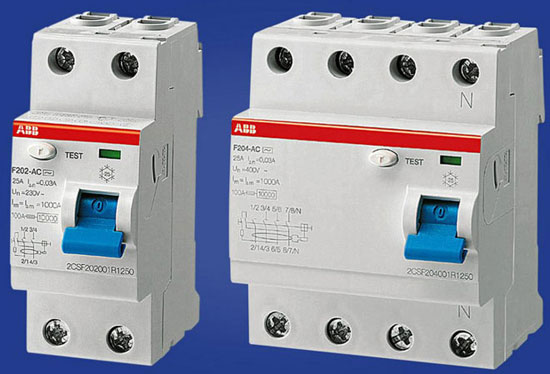
Content
RCD connection diagrams in a single-phase network
The industry produces residual current devices designed to operate in a single-phase or three-phase network. Single-phase devices have 2 poles, three-phase - 4. Unlike circuit breakers, neutral conductors must be connected to disconnecting devices in addition to phase wires. The terminals to which the zero conductors are connected are designated by the Latin letter N.
To protect people from electric shock, RCDs are most often used that respond to leakage currents of 30 mA. In damp rooms, basements, children's rooms, devices set to 10 mA are used. Disconnecting devices designed to prevent fires have a trip threshold of 100 mA or more.
In addition to the trip threshold, the protective device is characterized by a rated switching capacity. This term refers to the maximum current that the breaking device can withstand indefinitely.
An important condition for the reliable functioning of protection against leakage currents is the grounding of metal cases of electrical apparatus. TN grounding can be done with a separate wire or through the grounding contact of the mains socket.
In practice, two methods are used to include residual current devices in an electrical circuit:
- RCD connection diagram with individual protection;
- group consumer protection scheme.
The first switching method is most often used to protect powerful consumers of electricity. It can be applied to electric stoves, washing machines, air conditioners, electric heating boilers or water heaters.
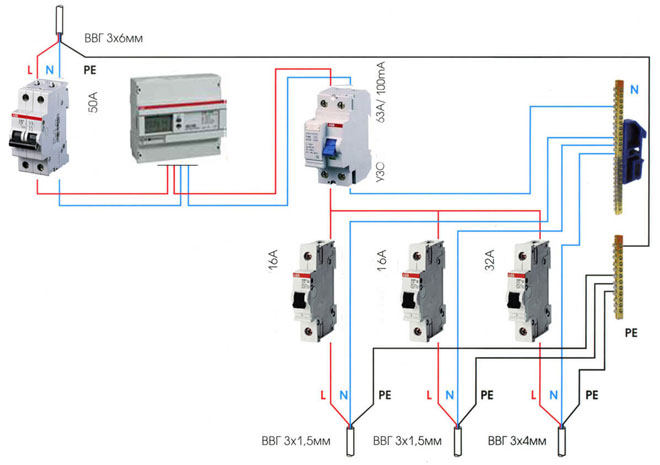
Individual protection provides for the simultaneous connection of the RCD and the machine, the circuit is a serial connection of two protective devices. They can be placed in a separate box in the immediate vicinity of the electrical receiver. The choice of the disconnecting device is carried out according to the rated and differential current.It will be better if the rated breaking capacity of the protective device is one step higher than the rating of the circuit breaker.
With group protection, a group of automata supplying different loads is connected to the RCD. In this case, the switches are connected to the output of the leakage current protection device. Connecting an RCD in a group circuit reduces costs and saves space in switchboards.
In a single-phase network, the connection of one RCD for several consumers requires the calculation of the rated current of the protective device. Its load capacity must be equal to or greater than the sum of the ratings of the connected circuit breakers. The choice of the differential protection threshold is determined by its purpose and the hazard category of the premises. The protective device can be connected in the switchboard in the stairwell or in the switchboard inside the apartment.
The scheme for connecting RCDs and machines in an apartment, individual or group, must comply with the requirements of the PUE (Electrical Installation Rules). The rules unequivocally prescribe the grounding of electrical installations protected by RCDs. Failure to comply with this condition is a gross violation and may lead to negative consequences.
RCD connection diagrams in a three-phase network
Urban housing is usually powered by a three-wire single-phase network. The previous section described how to connect an RCD in an apartment.
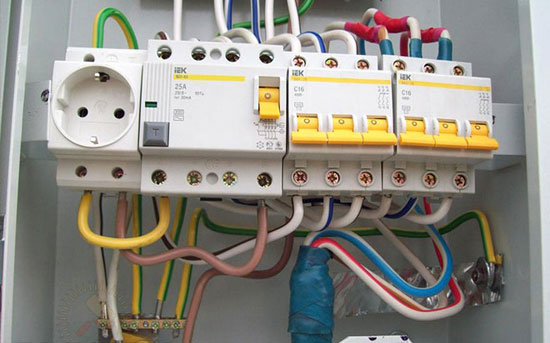
Country houses and households often consume much more electricity. They are often connected to a three-phase network. In a country house, electric heating boilers, powerful water heaters for hot water supply can be used.In the back rooms, workshops are often organized, equipped with machines for various purposes.
Many powerful loads are designed for a voltage of 380 V. To power them, wiring must be used, consisting of five conductors - three phases, zero and a protective earth wire. Many places operate outdated four-wire networks that do not have a separate ground conductor. In this case, to use a three-phase RCD, the owners themselves have to make a ground loop and lay a ground network.
In the presence of grounding, installing an RCD in a three-phase network is no different from connecting single-phase protective grounding devices. Connection diagrams and selection criteria for protection devices remain the same.
If there is a power value of a three-phase load powered by a 380 V network, the rated current can be calculated using the formula:
I \u003d P / 1.73 U,
where I is the rated current; P is the power of the three-phase load; U is the voltage of a three-phase network.
Errors in connecting the RCD
Novice electricians and home craftsmen often do not know how to properly connect RCDs and machines. When connecting residual current protective devices, the following rules must be strictly observed:
- residual current devices must be connected in series with circuit breakers;
- protected electrical equipment must be grounded.
Despite the simplicity of the rules, repeated errors are common. Many craftsmen believe that disconnecting devices should work when a person touches parts of electrical equipment that are energized as a result of insulation failure.This is an erroneous opinion. Protection should not work when touched by a person, but at the moment of insulation violation. Therefore, in conjunction with the RCD, protective grounding is used.
The second common and dangerous mistake is the use of "zeroing". In this case, the neutral conductor is connected to the body of the protected electrical equipment. Such a scheme is dangerous because if the neutral wire is broken, there is a possibility of a phase appearing on the protected equipment.
Another common mistake is to connect neutral conductors powered by different protective devices. Such a connection necessarily leads to the appearance of leakage currents and the operation of protection devices.
RCD installation
Solving the question of how to connect an RCD or an automatic machine is rarely difficult. Modern protective devices are available in standard modular housings and are mounted on a DIN rail. For mounting on a rail, they are equipped with convenient latches. To connect the conductors, they use screw terminals or spring clips, which allow for screwless installation.
Manufacturers offer indoor and outdoor DIN rail switchboards. Such devices have an aesthetic appearance and allow you to quickly install in a city apartment and in an individual private house.
Similar articles:
